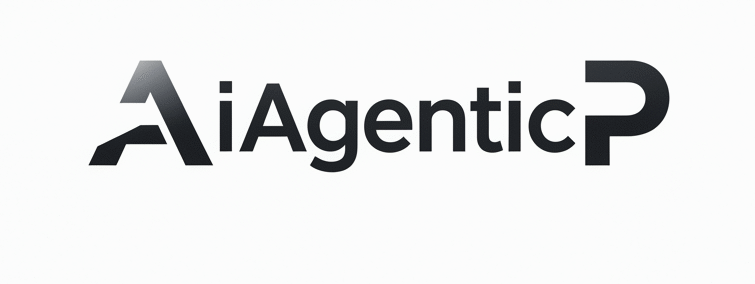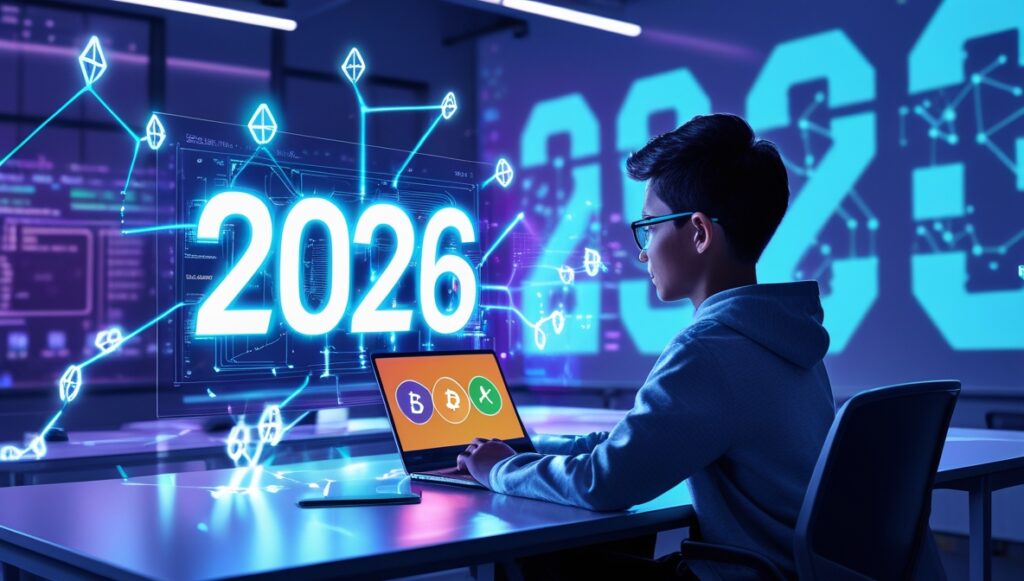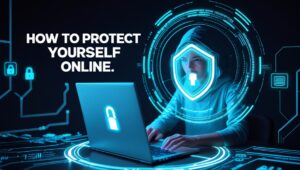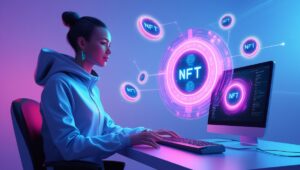How to Learn Blockchain Technology in 2026: A Step-by-Step Beginner’s Guide
The world is rapidly adopting blockchain technology not just for cryptocurrency, but for supply chain management, banking, healthcare, and even government systems. If you’re wondering how to learn blockchain in 2026, you’re in the right place.
This guide will walk you through everything you need to know, step by step, to master blockchain basics and start building a career or project in this exciting field.
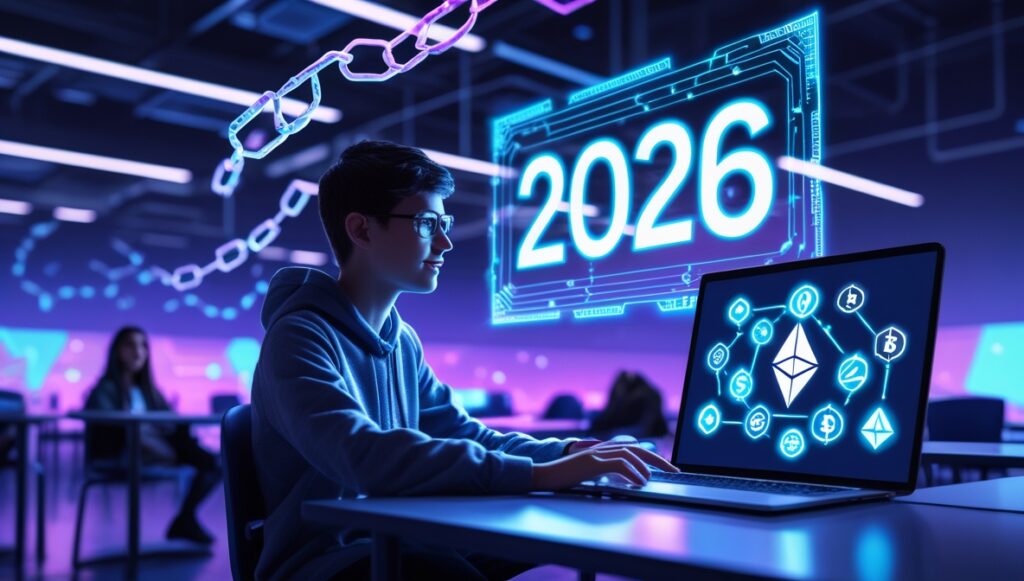
A Step-by-Step Beginner’s Guide
Step 1: Understand the Basics of Blockchain
Before diving deep, you need to build a solid foundation. At its core, blockchain is:
- A distributed digital ledger that records transactions securely.
- Immutable, meaning data cannot be easily changed once stored.
- Decentralized, so no single entity controls the system.
Key Concepts You Should Learn:
- Blocks & Chains → How transactions are grouped.
- Consensus Mechanisms → Proof of Work (PoW), Proof of Stake (PoS).
- Public vs Private Blockchains → Open vs enterprise solutions.
- Smart Contracts → Self-executing agreements on platforms like Ethereum.
Tip: Start with free resources like YouTube explainers or beginner blogs before moving into technical content.
Step 2: Learn the Tools of the Trade
To work with blockchain, you’ll need to understand the tools and platforms powering the ecosystem.
Essential Platforms to Explore:
- Ethereum – The most popular for smart contracts and dApps.
- Polygon & Solana – Scalable, fast networks for building apps.
- Bitcoin – The original blockchain and digital currency.
- Hyperledger Fabric – Enterprise-focused blockchain solution.
Hands-On Tools:
- MetaMask → Popular crypto wallet for interacting with dApps.
- Remix IDE → Beginner-friendly environment for writing smart contracts.
- Truffle Suite → Development framework for blockchain apps.
Step 3: Learn a Programming Language for Blockchain
To really understand blockchain, learning a programming language is essential.
Recommended Languages:
- Solidity → Best for Ethereum smart contracts.
- JavaScript → Connects front-end apps to blockchain networks.
- Python → Great for blockchain simulations and analytics.
- Rust & Go → Used in modern blockchain frameworks like Solana and Polkadot.
Pro Tip: Start with Solidity, as it’s beginner-friendly and widely used in blockchain development.
Step 4: Take an Online Blockchain Course
By 2026, online learning platforms have made blockchain education more accessible than ever.
Best Free & Paid Resources:
- Coursera: Blockchain Specialization (University-backed learning).
- Udemy: Blockchain & Ethereum Developer Course (Affordable, practical).
- CryptoZombies (Free, gamified way to learn Solidity).
- edX (Professional blockchain certification programs).
Choose a course that matches your career goals whether you want to become a blockchain developer, crypto trader, or business strategist.
Step 5: Practice With Real Projects
Theory isn’t enough. Blockchain mastery comes from hands-on experience.
Beginner Project Ideas:
- Create a basic smart contract (e.g., a “Hello World” contract).
- Build a personal crypto wallet using Ethereum.
- Launch a simple NFT collection.
- Design a token for practice (ERC-20 standard).
Working on projects not only strengthens your skills but also helps build a portfolio to showcase to future employers or clients.
Step 6: Stay Updated on Blockchain Trends (2026 and Beyond)
Blockchain evolves fast. In 2026, the hottest trends include:
- Decentralized Finance (DeFi) – Banking without middlemen.
- Central Bank Digital Currencies (CBDCs) – Government-backed crypto.
- Layer-2 Scaling Solutions – Faster, cheaper transactions.
- Web3 & Metaverse Integration – Virtual reality powered by blockchain.
- Green Blockchain – Eco-friendly consensus mechanisms.
Subscribe to trusted blockchain newsletters and follow top communities on Reddit, Twitter (X), and Discord.
Step 7: Join the Blockchain Community
Blockchain is about community and collaboration. The more you engage, the faster you’ll learn.
Where to Network:
- Reddit communities (r/ethereum, r/cryptocurrency).
- GitHub (for open-source blockchain projects).
- Discord groups (developer-focused discussions).
- LinkedIn groups (professional networking).
By networking, you’ll gain real-world insights, discover opportunities, and stay motivated.
Step 8: Explore Blockchain Careers in 2026
Blockchain isn’t just for coders there are opportunities for writers, marketers, analysts, and more.
Popular Career Paths:
- Blockchain Developer – Builds smart contracts and apps.
- Blockchain Analyst – Studies market and technical trends.
- Crypto Content Creator – Educates and informs audiences.
- Blockchain Consultant – Helps companies adopt blockchain solutions.
- NFT/Metaverse Specialist – Works with digital assets and virtual worlds.
Common Mistakes to Avoid When Learning Blockchain
- Trying to learn everything at once → Focus on one blockchain first.
- Ignoring security basics → Always use testnets before mainnets.
- Falling for scams → Be cautious of “get-rich-quick” crypto schemes.
- Skipping projects → Real learning comes from building, not just reading.
Learning blockchain in 2026 is more accessible than ever but it requires dedication, consistency, and hands-on practice. By following this step-by-step guide, you’ll gain the skills to not only understand blockchain but also apply it in real-world projects and careers.
Whether your goal is to become a blockchain developer, educator, or consultant, the key is to start small, practice often, and keep learning.
Blockchain is the future and by starting today, you’ll be ready to thrive in 2026 and beyond.
